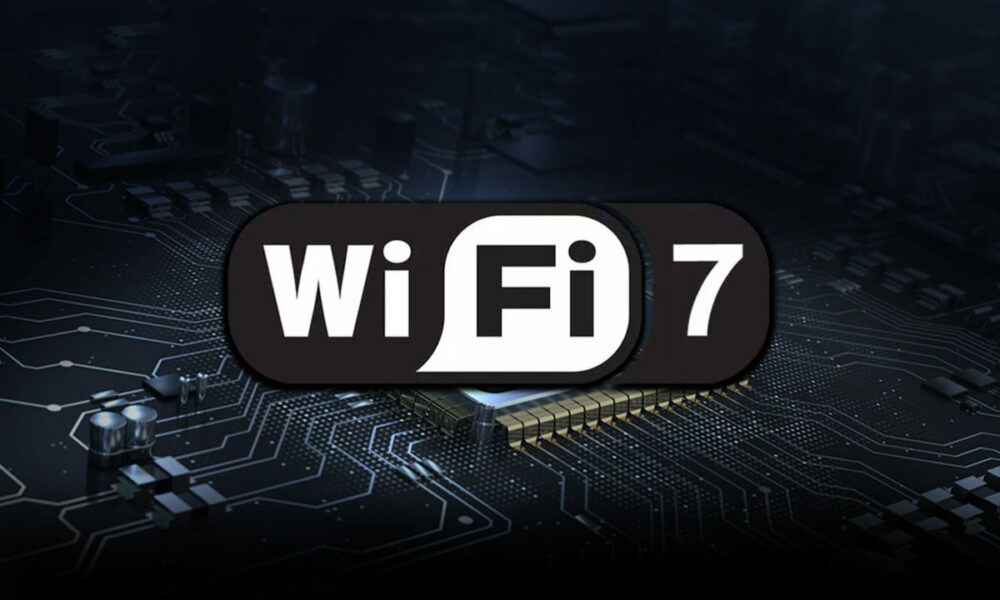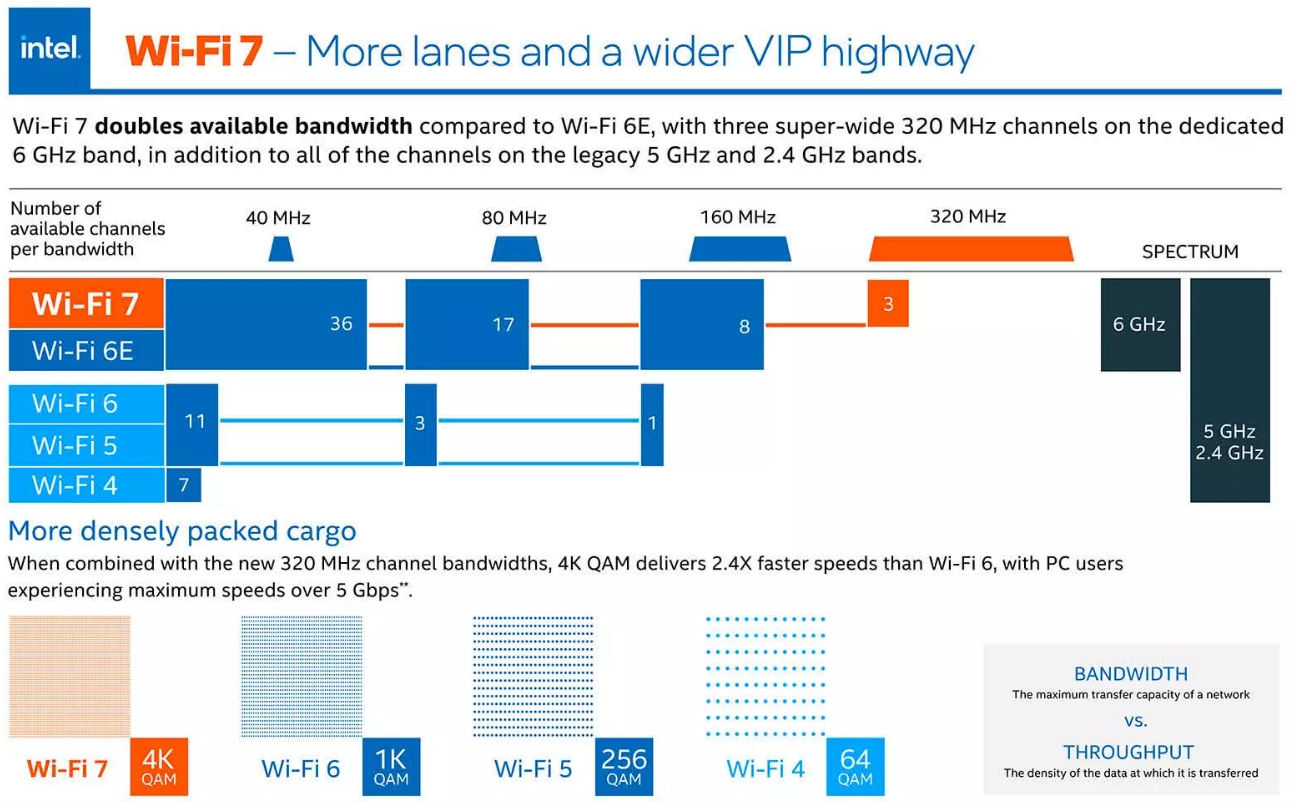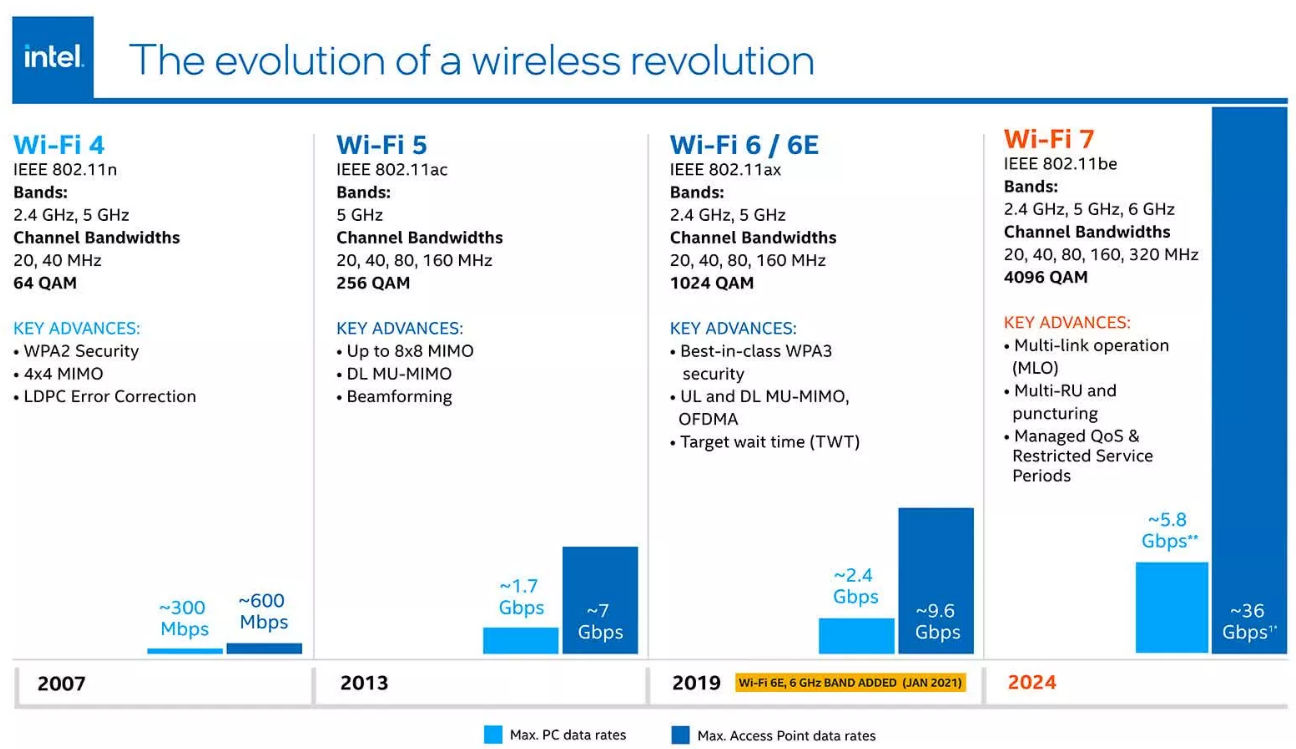
The next version of the great wireless connectivity standard, Wi-Fi 7, is still in development and will not take long to reach the market. Although Wi-Fi 6 (and Wi-Fi 6E) have been a level jump compared to previous standards, Wi-Fi 7 will be the version that definitely allows replace local wired networks via wireless connections.
Wi-Fi 7 is defined as 802.11be and points to two key advantages that have been repeated in each new version of the standard: faster speeds and reduced network congestion. According to the responsible body WiFi Alliance, the new version will support throughput of 30 Gbps or more, which is a big step up from the maximum speeds of 9.6 Gbps available in Wi-Fi 6.
Multiple vendors are working on its launch and now we get Intel’s roadmap from a press conference by the firm’s vice president of wireless solutions, Eric McLaughlin. Although the chip giant got out of the router and gateway business, the company remains the world’s number one producer of Wi-Fi modules for personal computers.
According to the executive, Intel chips with support for Wi-Fi 7 will be released in late 2024 and will be released on laptops to later spread to the rest of the segments of personal computers.
It must be said that with this schedule, Intel could fall behind the competition. The first network devices with Wi-Fi 7 (routers, access points, etc.) are expected in 2023 and providers such as MediaTek and Qualcomm have already made technological presentations for the new standard with the ARM architecture. We will see.
Wi-Fi 7 main features
- Theoretical data transfer rate of up to 46Gbps. A monumental increase compared to 9.6 Gbps of Wi-Fi 6.
- bandwidth of 320MHz (320/160+160 MHz and 240/160+80 MHz) doubling that of Wi-Fi 6.
- More efficient use of contiguous and non-contiguous spectrum.
- Aggregation and multiband/multichannel operation.
- Quadrature amplitude modulation QAM up to 4094 compared to the previous 1024.
- Double the number of spatial streams from 8 to 16 and improvements to the MIMO function.
- Improved resource allocation in OFDMA.
- Multiuser Resource Unit (MRU) to increase the ability to connect more devices at higher speeds and with fewer interruptions.
- Enhancements to Multi-Link Operation (MLO) technology, which aggregates multiple channels in different frequency bands at the same time to improve network traffic. Essential for streaming gameplay.
- Coordination of multiple access points (AP) in coordinated and joint transmission.
- Enhanced link adaptation and retransmission protocol, especially in hybrid auto-repeat requests (HARQ).





